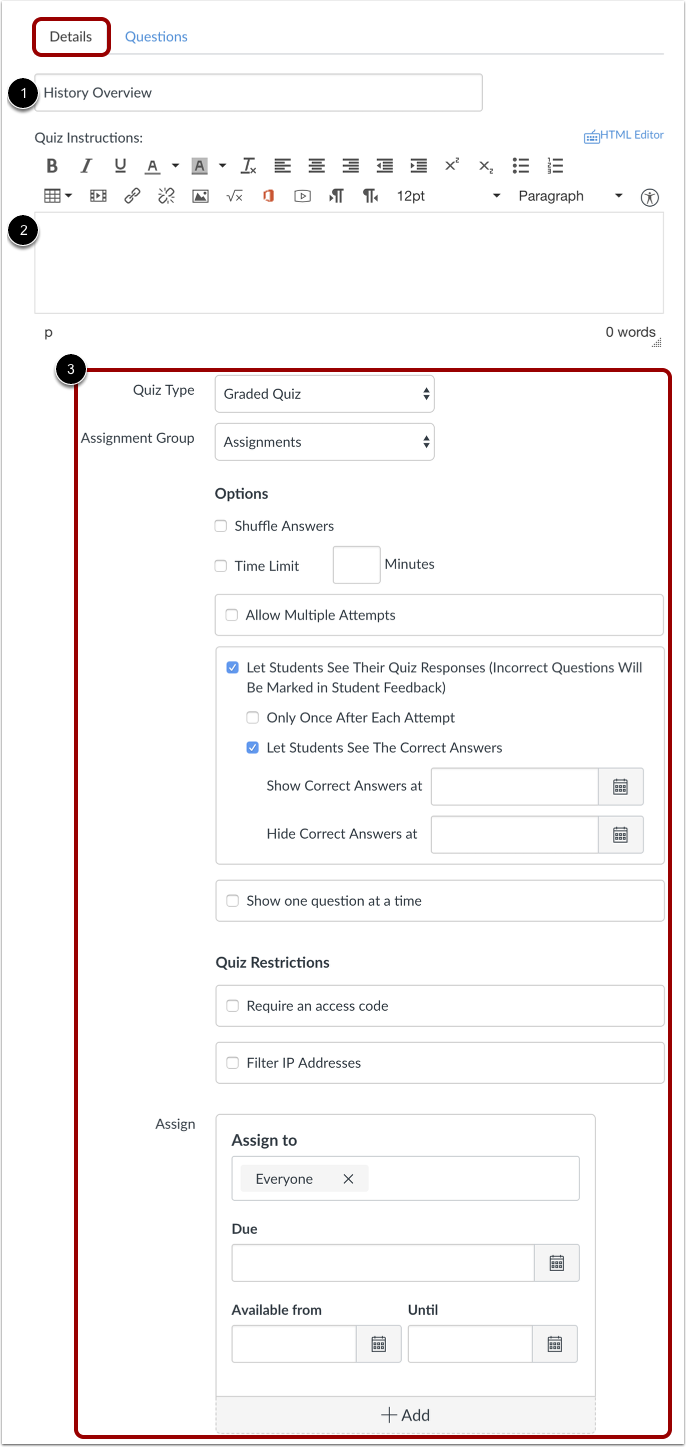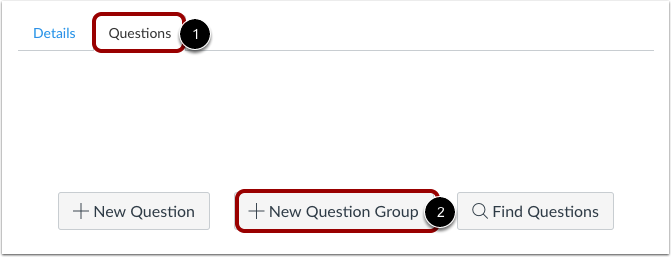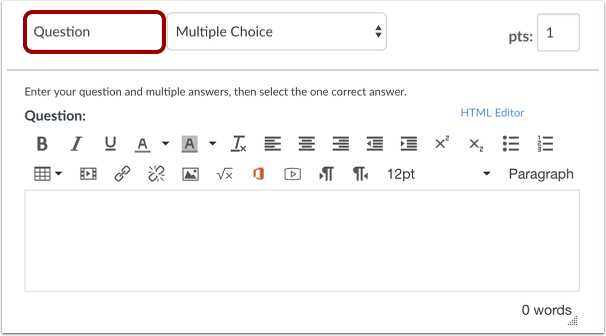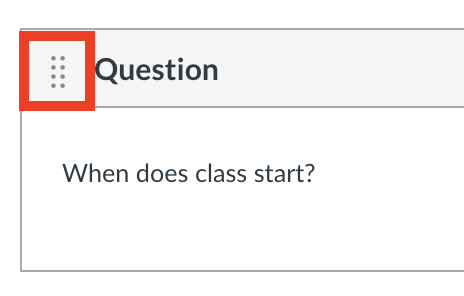You can randomize questions in Canvas’s Classic Quizzes by using question groups. All of the questions in a given question group will be automatically randomized when your students take the quiz.
Create a New Quiz
- Create a new quiz by going to the Quizzes section of your course
- Click the + Quiz button in the upper right
- Select Classic Quizzes
*Note: If you’re using the New Quizzes engine, you can shuffle questions without creating question groups - In the Details tab, enter the name of your quiz [1]. In the Rich Content Editor [2], introduce your quiz with formatted text, images, video, or sample math equations. You can even use the media commenting tool to record an introduction to the quiz.
- Complete the rest of the quiz details [3].

Create a New Question Group
- Click the Questions tab [1]. Click the New Question Group button [2]

- Give your question group a name [1].
- Decide how many questions you want Canvas to randomly select from the group [2] and the number of points assigned to each question [3].

*Note: Regardless of the question group name, students always see quiz questions in numerical order (i.e. Question 1, Question 2).- If you’d like to link to a pre-existing question bank, click the Link to a Question Bank option below the details above. This allows you to select questions that have already been created in your course.
- Click the Create Group button.
The number of questions picked [2] needs to be equal to or greater than the number of questions in the group. All of the questions in the group will be automatically randomized when your students take it. However, you can further randomize the questions by selecting a smaller number of questions than the number of questions in the group. For instance, you can choose to only pick 10 out of the 15 questions in the question group, which will ensure that students not only receive questions in a random order, they’ll be given different questions as well.
You can also create multiple question groups for a given quiz if you’d like the point value to vary by question type. For instance, if you’re going to have multiple essay questions that will be worth more points than the multiple-choice questions in the quiz, you can create a separate question group for essay questions and a separate question group for multiple-choice questions. All questions in any given group must be worth the same amount of points.
Add Questions to the Question Group
There are two ways to add questions to a question group:
Add Individual Questions
- Click the Add icon in the upper right corner of the question group

- Enter a question name (optional). This name helps find previously used questions in the future.

- Select the question type that you’d like to use

Refer to the Canvas Guides for details on the different types of questions that can be created. - Enter the points possible for the question

- Enter the question details according to the question type that you chose.
- Click the Update Question button to save your question.
- Repeat this process until you have all of your questions created within the question group.
Finding and Adding Questions from a Question Bank
- Individual questions can be added from a question bank after the question group has been created.
- Click the Find Questions button and select the questions that you want to add to the quiz.
- Click and drag the questions into the question group using the handle to the left of the question title

